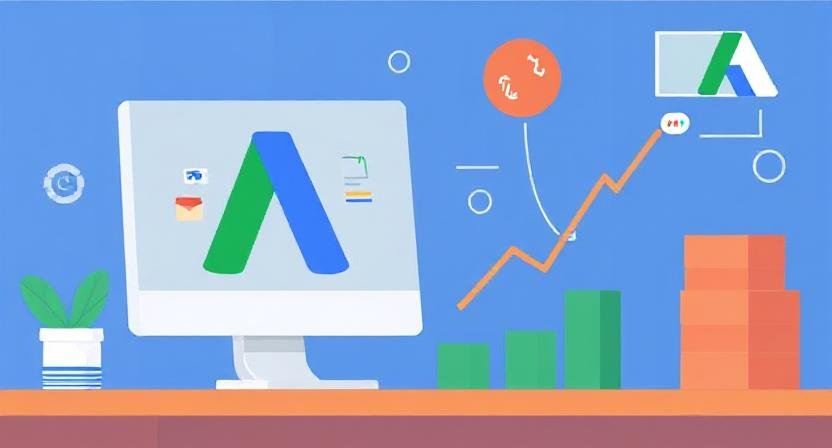Google Ads continues to be one of the most effective marketing platforms for reaching targeted audiences and driving conversions in 2025. As the digital landscape becomes more competitive and AI-driven tools evolve, advertisers must adopt new strategies—focusing on ongoing optimization—to maximize their return on ad spend (ROAS).
This detailed guide covers how to create Google Ads, how to post ads on Google for free, how to leverage a website ad revenue calculator, and how to use a website AdSense earning checker effectively. By integrating these elements into your strategy, you can ensure continuous campaign growth and improved profitability.
How to Create Google Ads That Deliver Results in 2025
1. Clear Goal Definition
Before launching your campaign, define your objective clearly—whether it’s lead generation, online sales, app installs, or brand awareness. Precise goals guide your campaign setup, targeting, and bidding strategies.
2. Campaign Structuring
Organize campaigns into small, tightly themed ad groups. Focus on high-intent keywords rather than broad terms. Proper structure improves ad relevance, quality score, and reduces CPC.
3. Keyword Research and Optimization
Use advanced tools like Google Keyword Planner to discover high-converting long-tail keywords. Regularly review search term reports to add negatives and prune underperformers. In 2025, exact match and phrase match keywords dominate, but AI-driven smart bidding complements broader match types.
4. Creative and Ad Copy Best Practices
Generate multiple ad headlines and descriptions to allow Google’s responsive search ads to automatically test and optimize the best combination. Include strong calls to action, benefits, and relevant keywords.
5. Data-Driven Bidding Strategies
Leverage Google’s Smart Bidding options such as Target CPA, Target ROAS, and Maximize Conversions. These strategies are powered by AI and adapt bid adjustments in real-time to maximize results.
6. Continuous Campaign Monitoring & Refinement
Monitor KPIs like CTR, CPC, conversion rate, and quality score. Use performance insights to refine keywords, pause poor-performing ads, and optimize landing pages.
How to Post Ads on Google for Free in 2025
Although Google Ads primarily relies on paid campaigns, you can benefit from several cost-effective or free promotion tactics:
-
Google Promotional Credits: Claim free ad credits after qualifying initial spends, often up to $150.
-
Google Business Profile Optimization: This free listing appears in local searches and maps, providing organic visibility.
-
Smart Campaigns: These automate targeting and bidding within small budgets, maximizing efficiency.
-
Content & SEO Strategy: Invest in high-quality SEO-optimized content that drives organic traffic and reduces reliance on paid ads over time.
Using these techniques in combination can elevate your brand’s visibility without overspending.
Estimating Website Ad Revenue with a Revenue Calculator
Understanding your website’s potential ad revenue helps guide your content and ad placement strategies:
-
Use tools like the website ad revenue calculator to input your traffic volume, CTR, CPC, and RPM.
-
This provides a realistic projection of your monthly or annual income, helping you allocate budgets and set expectations.
-
Regular estimation aids in identifying growth opportunities or areas that need optimization.
Tracking Earnings Using a Website AdSense Earning Checker
Monitoring your actual earnings ensures your monetization strategies remain effective:
-
Google’s AdSense dashboard offers real-time insights on revenue, clicks, CTR, and RPM.
-
Several third-party tools allow detailed tracking, alerts, and performance analysis.
-
Regular audits help discover high-performing pages or ads, allowing you to scale profits effectively.
Strategic Optimization Tactics for 2025
1. Focus on Audience & Intent
Use customer data, remarketing, and in-market audiences to target high-probability converters. Tailor ad copy and landing pages for specific segments.
2. Implement Responsive Search Ads
Responsive ads allow Google’s AI to test multiple headline and description combinations to find the highest performers, continuously optimizing your campaigns.
3. Emphasize Landing Page Experience
Ensure your landing pages are fast, mobile-optimized, and contain a clear CTA that matches your ad messaging. User experience directly impacts conversion rates and quality score.
4. Leverage All Ad Extensions
Use sitelinks, callouts, structured snippets, and location extensions to increase ad real estate, clickability, and relevance.
5. Regularly Conduct A/B Testing
Test different ad copies, landing pages, images, and audience settings. Use the insights for iterative improvements.
6. Embrace Automation but Stay Involved
While Google’s AI automates much of bidding and targeting, periodic manual reviews prevent stagnation and help adjust to market shifts.
Avoid Common Pitfalls
-
Neglecting to track conversions accurately leads to misguided optimizations.
-
Over-tweaking settings too often hampers machine learning.
-
Ignoring audience insights reduces targeting efficiency.
-
Chasing vanity metrics like impressions instead of conversions can waste ad spend.
Key Resources for 2025 Campaign Success
-
Google Ads Help Center: Essential for latest best practices, updates, and policies.
-
Proprietary tools like Google Analytics combined with Google Ads provide powerful insights and data-driven optimization tactics.
Read More: Google Ads Optimization Strategies for 2025: Maximize ROI and Drive Growth
Final Thoughts
In 2025, mastering how to create Google Ads, post ads for free, and effectively use revenue calculators and AdSense checkers will position you ahead of your competition. Focus on data-driven decisions, continuous testing, and strategic audience targeting, and you’ll unlock the true potential of your digital marketing efforts.
Always keep up with industry updates and leverage Google’s AI innovations—these combined efforts will maximize your ROI and ensure long-term growth in today’s competitive landscape.

